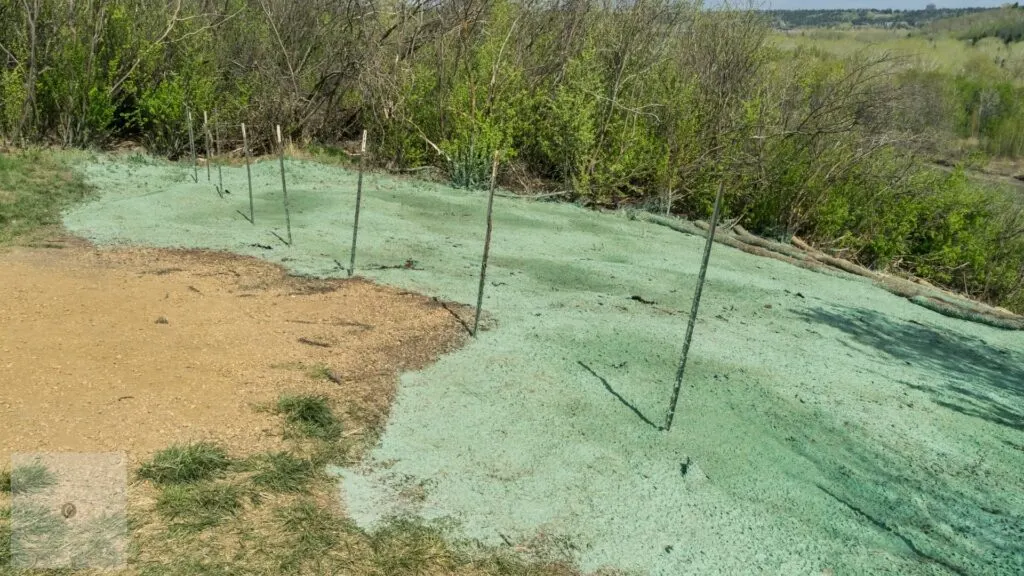The landscaping and agricultural industries are always looking for new ways to improve planting efficiency. One popular method is hydroseeding, which has become more common because of its success in stabilizing soil and promoting grass growth. Hydroseeding mixes seed, mulch, and fertilizer into a nutrient-rich slurry that is sprayed onto prepared ground. Its growing use is driven by its ability to quickly cover large areas, prevent soil erosion, and boost seed germination. As sustainable practices gain more attention, understanding hydroseeding is becoming necessary for both industry professionals and clients.

However, misunderstandings about hydroseeding often cause clients to hesitate. Addressing these concerns is key to helping clients make informed decisions and build trust with service providers. This overview looks at the common myths about hydroseeding, including its cost, environmental impact, effectiveness, and maintenance needs.
What is Hydroseeding and How Does It Work?
Hydroseeding is a quick and flexible planting method that involves spraying a mix of seeds and mulch onto prepared soil. This mix usually includes water, fertilizer, and sometimes a sticky agent to help it stick to the ground. The process starts by clearing and lightly tilling the soil. After spraying, the mulch helps keep the moisture in, shields the seeds from the environment, and creates a good spot for them to sprout.
Hydroseeding is used for everything from home lawns to large erosion control projects on highways and steep slopes. Its success comes from how the mulch keeps seeds in place and moist, boosting germination and leading to fast, even growth. It also reduces soil erosion right away, stabilizes loose soil, and helps plants grow in areas where regular seeding might not work.
Dispelling Myths About Hydroseeding Cost
Many people believe hydroseeding is very costly, but it’s often more affordable than traditional methods like sod installation. Sod comes with high initial costs and ongoing maintenance expenses, whereas hydroseeding typically requires less labor and delivers quicker, more uniform results.
Hydroseeding’s upfront cost is offset by its ability to quickly establish a strong lawn, reducing the need for frequent reseeding and helping to prevent soil erosion. Over time, it offers significant savings on maintenance and water, and avoids the potential need for rework. Despite the higher initial price compared to basic seeding, hydroseeding proves to be a cost-effective and efficient choice for achieving a lush, healthy lawn in the long term.
Clarifying Hydroseeding’s Environmental Impact
Many people misunderstand how eco-friendly hydroseeding is, but it can be a great choice for green landscaping. Unlike traditional methods that can disturb the soil, hydroseeding is gentler. The mixture of seed, mulch, and fertilizer works together to improve soil health. It strengthens soil structure, helps it hold moisture, and restores nutrients.
Hydroseeding also helps control erosion. The mulch acts like a protective layer, keeping the soil in place and stopping erosion from wind and water. This is especially useful on slopes or newly graded areas, where it stabilizes the ground right away. Environmentally, hydroseeding cuts down on the need for chemicals and supports a natural balance, making it a sustainable option for both small lawns and large reclamation projects.
Evaluating Hydroseeding’s Effectiveness and Longevity
When assessing how effective and long-lasting hydroseeding is, several factors come into play. Hydroseeding is known for its fast growth and good coverage, often better than traditional seeding methods. The nutrient-rich mixture helps seeds sprout and grow quickly, providing near-instant results that are great for clients who want quick green coverage.
In the long run, hydroseeding is durable. The strong root systems it creates help stabilize soil and control erosion, which is important for maintaining vegetation in tough conditions. These robust roots generally outperform those from traditional seeding, resulting in healthier and more resilient plants.
Addressing Concerns About Maintenance and Care
To clear up the myths about hydroseeded lawn care, it’s actually simpler than you might think. Start by keeping the soil consistently moist while the seeds are germinating. Once the grass starts growing, mow regularly to encourage thick growth, just like with any other lawn. Use a balanced fertilizer to keep the lawn healthy and vibrant.
You might need to control weeds at first, but a well-hydroseeded lawn will usually outgrow weeds, so you won’t need as many herbicides. Compared to sod, which requires a lot of watering and repair work, hydroseeded lawns are often easier to maintain and more durable. By following these simple steps, you can enjoy a lush, green lawn with less hassle than you might expect.
Understanding the true benefits of hydroseeding helps clarify its value in landscaping and erosion control. Far from being a costly or environmentally harmful option, hydroseeding offers a cost-effective, eco-friendly solution with quick, effective results. Its ability to stabilize soil, reduce erosion, and promote robust plant growth makes it a preferred choice for both residential and large-scale projects. By addressing common misconceptions about its cost, environmental impact, and maintenance, professionals can better appreciate hydroseeding’s role in modern landscaping. Embracing this method ensures efficient, sustainable outcomes for diverse planting needs.

Jessi is the creative mind behind The Coffee Mom, a popular blog that combines parenting advice, travel tips, and a love for all things Disney. As a trusted Disney influencer and passionate storyteller, Jessi’s authentic insights and relatable content resonate with readers worldwide.
